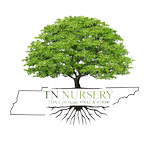Thuidium moss is a type of moss that belongs to the Thuidiaceae family. It's a lush green plant that grows in large clumps or mats. One of its most distinctive features is its feather-like leaves that overlap and create a dense texture.
But why is Thuidium moss so important? It plays a vital role in many ecosystems. It helps prevent soil erosion by holding it in place. It is essential in areas with steep slopes or at risk of landslides.
Thuidium Moss is a perfect choice. With its velvety texture and deep hues, this is a true feast for the eyes. How do you plant, grow, and care for Thuidium Moss? Let us learn more about all the processes to keep Thuidium moss perfect.
Requirements of Moss Thuidium
Thuidium moss prefers a location with plenty of shade and moisture. It can tolerate some sun, but direct sunlight for extended periods can dry out the moss and cause it to die off. So, if you plan on planting Thuidium moss outside, look for an area shaded for at least part of the day.
Thuidium moss prefers soil that's moist and well-draining. It can tolerate a range of soil types, from sandy to loamy, but it could do better in areas with heavy clay soil. To prepare the planting site, clear away any debris or weeds. It will give your moss the best chance to thrive.
When it comes time to plant, you'll want to ensure the moss is spread evenly and pressed firmly into the soil, ensuring it establishes itself properly and doesn't dry out or die off.
Thuidium moss can be a beautiful addition to any garden or outdoor space with the right location, soil, and preparation. So, get ready to enjoy the many benefits of this unique plant!
Planting Thuidium Moss: Choosing the Right Location
The art of planting Thuidium Moss is a delicate dance between nature and human hands. This verdant green beauty can transform any space into a lush wonderland with proper care and attention. Let us guide you through the steps to cultivate your little slice of heaven.
First, choose the perfect location for your Thuidium Moss. This exquisite species thrives in shady spots with moist, well-draining soil. Whether planting in a garden bed, a rockery, or a terrarium, prepare the area with the utmost care.
Next, gently remove any existing weeds or debris, and loosen the soil with a small rake or cultivator. Then, carefully place your Thuidium Moss in the desired area, not disturbing the roots.
As you plant, remember that Thuidium Moss is a communal species and prefers to grow in clusters. Arrange your moss in groupings for the most impressive visual impact.
Once your Thuidium Moss is securely in place, gently mist it with water to help it settle into its new home. Continue to water your moss regularly, ensuring the soil remains moist but not soggy.
As your Thuidium Moss grows and thrives, you'll be enchanted by its velvety texture and deep, rich hues. Enhancing natural beauty in your home or garden or creating a stunning work of living art, Thuidium Moss is a perfect choice. With some love and attention, you'll be rewarded with a breathtaking display of nature's finest craftsmanship.
Growing Thuidium Moss: Tips for Success
If you're interested in growing Thuidium Moss, we've covered you with some simple steps to get started.
First things first, pick a shady spot with well-draining soil. Thuidium Moss loves a damp environment, so choose a place where it will receive some moisture without being waterlogged.
Next, clear any debris or weeds from the area and loosen the soil. You can use a small rake or cultivator for this.
Now it's time to plant your Thuidium Moss! Be gentle and avoid disturbing the roots as you place them in the soil. And here's a tip: Thuidium Moss looks best when planted in clusters, so group them for maximum impact.
Once you've planted your moss, please give it a good misting with water to help it settle in. And remember to water it regularly, ensuring the soil stays moist but not too wet.
Caring for Thuidium Moss: Keeping it Healthy and Vibrant.
So you've planted some Thuidium Moss, and now you're wondering how to take care of it? No problem, we've got you covered!
First of all, make sure to keep the soil moist. Thuidium Moss loves a damp environment, but be careful not to overwater it. You don't want the soil to become waterlogged, so aim for a balance between damp and not too wet.
If you're growing your Thuidium Moss indoors, it's a good idea to mist it with water every few days, helping to keep the moss hydrated and looking its best.
If you notice any brown or yellow patches on your moss, it could be a sign that it's not getting enough moisture. In this case, please give it a good soak with water; it should bounce back quickly.
Thuidium Moss doesn't require fertilizer, but if you want to boost it, you can use fertilizer for growing moss.
And finally, if you're growing your Thuidium Moss outdoors, watch for any pests or diseases. Remove any dead or diseased moss as soon as you notice it, and keep the area around the moss clean and free of debris.
Taking care of Thuidium Moss is easy, and with a bit of attention, it will continue to thrive and look beautiful.
Thuidium Moss: Troubleshooting Common Problems
Thuidium moss is generally a hardy and resilient plant, but it can sometimes experience issues like any plant. Here are some common problems with Thuidium moss and how to solve them.
Yellowing
If you notice that your Thuidium moss is turning yellow, this could be a sign that it's not getting enough water. Try watering it more frequently, and ensure the soil stays moist. You can also add some fertilizer to the soil to help the moss absorb more nutrients.
Browning
Browning is often a sign of too much sunlight or heat. If your Thuidium moss is turning brown, try moving it to a shadier location or providing shade using a cloth or other cover. You can also mist the moss with water to help cool it down and moisten it.
Weed invasion
If you notice weeds starting to invade your Thuidium moss bed, removing them as soon as possible is essential. Weeds can compete with the moss for resources and make it harder for the moss to grow. You can pull the weeds by hand or use a hoe or other tool to remove them.
Insect infestations
Although Thuidium moss is generally resistant to pests, it can sometimes be affected by insect infestations. If you notice insects on your moss, try using an insecticidal soap or other organic pest control product to eliminate them.
Conclusion
Thuidium moss is generally a low-maintenance plant. It can sometimes experience problems like yellowing, browning, weed invasion, and insect infestations. By following the tips we've provided, you can help solve these issues and keep your Thuidium moss bed healthy and thriving. Remember to monitor your moss bed regularly and adjust as needed to ensure it continues to look its best.


